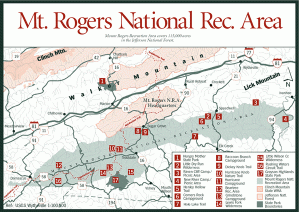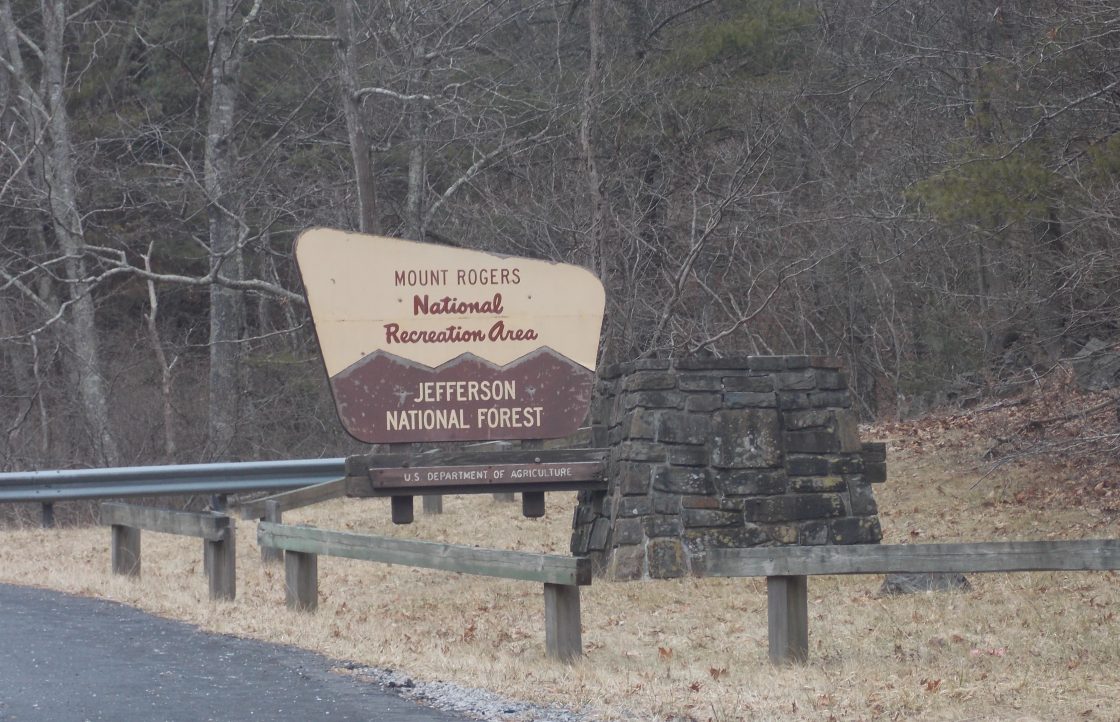PUBLIC LAND
© 2019 Walt Hampton
Within Appalachia there are several types of public land, whose access and management is controlled by different agencies, both state and federal. Even within those parcels of land that fall under one agency there may be land that is controlled by a separate agency; for example, within the national forest land, administered by the Department of Agriculture of the federal government, you could find the Blue Ridge Parkway, administered by the Department of the Interior, National Park Service. These two agencies vary greatly in their management mandates and access policies and an understanding of how these agencies came into being, and how they have changed over time, is important to understanding how land under their control is presently managed. Throw into the mix the state agencies, such as the State Parks, state forests or state wildlife management areas, and you could easily have conflicting management and land use policies within one parcel.
In Virginia, for instance, we have national forest (Dept of Agriculture), national parks (Department of the Interior), National monuments and National seashores (Interior); the state game department controls the state wildlife management areas and boat ramps, the state department of conservation and recreation controls the state parks, the department of forestry controls state forest land, and so on. In some counties this amounts to a lot of acreage; in Grayson County, Virginia, my home county, there are 33,339 acres of national forest, approximately 11% of the land in the county. It is a simple statement of fact that the management decisions affecting this acreage are made at the federal level and are out of the hands of the county residents. This fact has both positive and negative implications for those residents.
There are many reasons to embrace and be proud of public land, not the least of which is the protection of unique natural features that enhance our understanding of natural or cultural history, or to allow access to the general public to experience and understand how different land management strategies affect natural systems. This understanding must be predicated on this biological and scientific truth: that nature is not static—as time progresses, natural systems do not remain the same, they change, regardless of our intentions. A good example of this is the concept of “old-growth” forests; some people like to see big trees, so on some public land the management strategy has been geared to increase the acreage of trees in the older age classes. What is missing from this concept is the realization that 1) trees do not live forever; and 2) as a forest matures and the age class of the stand becomes uni-dimensional, the diversity of living things found on the acreage will actually decrease. Simply put, you cannot just screw the lid down on a natural forest system in terms of prohibiting management and rationally think that that system will forever remain the same as it is today. All management decisions have consequences, even the decision to stop management. Those consequences may not be the ones that we anticipated or wanted.
Having public land in a county can be a tremendous asset; how that land is managed should be of concern to every resident of the county, and the managing agencies should be responsive to the concerns and desires of those residents, as well as to those of the potential visitors.
What is going on concerning the public land in your county? Isn’t it time you found out?




